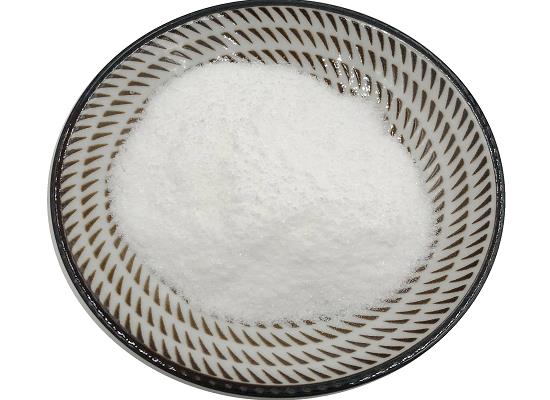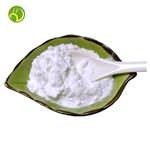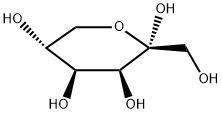D-Tagatose: Potential as a Versatile Low-Calorie Sweetener for Managing Blood Glucose
Mar 18,2024
General Description
D-Tagatose is a low-calorie sugar substitute that has been approved as a safe sweetener by the FDA and EU. It has shown potential in managing blood glucose levels, especially in individuals with hyperglycemia and type 2 diabetes. Studies have demonstrated its ability to reduce HbA1c and fasting glucose levels, inhibit carbohydrate absorption, and impact hepatic glycogenolysis. The proposed mechanisms behind its glycemic control include the inhibition of intestinal disaccharidases, stimulation of GLP-1 secretion, and promotion of short-chain fatty acid production. D-Tagatose also has the potential to lower cholesterol levels. Overall, D-Tagatose shows promise as a treatment for diabetes and obesity.

Figure 1. D-Tagatose
Overview
D-Tagatose is an isomer of fructose that is known for being approximately 90% sweeter than sucrose. Developed as a low-calorie sugar substitute, this fructose is a natural hexose that offers various benefits when used as a sweetener. When orally ingested, only 20% of tagatose is metabolized completely, primarily in the liver. In 2001, the Food and Drug Administration designated D-Tagatose as a generally recognized safe product, paving the way for its use as a nutritional sweetener with low caloric content. Following FDA approval, the European Union also approved D-Tagatose as a "new food ingredient" without specific usage restrictions. Currently, D-tag is commonly utilized in beverages, yogurt, creams, and dietetic candy. The production of D-tag involves the direct isomerization of D-galactose into D-tag using metal hydroxides as chemical catalysts under basic conditions. Studies suggest that D-Tagatose has potential antihyperglycemic properties by reducing glucose levels, inhibiting carbohydrate absorption, and impacting hepatic glycogenolysis. Additionally, it has shown promise in lowering total cholesterol, VLDL, and LDL levels while increasing HDL cholesterol levels. Although some early research indicated no immediate impact on glucose or insulin levels during fasting, ongoing studies point towards D-Tagatose's significant antidiabetic effects and its potential as a treatment for obesity. 1
Promising Role in Managing Blood Glucose
D-Tagatose is a potential treatment for diabetes, as evidenced by several studies that have investigated its effects on blood glucose levels. For example, a phase II study and a phase III effectiveness study demonstrated a statistically significant reduction in HbA1c in diabetic patients who were treated with D-tagatose over the course of 6 to 12 months. Additionally, a cross, randomized, double-blind experimental design showed that individuals with hyperglycemia experienced a significant reduction in blood glucose levels after consuming a beverage sweetened with tagatose. This effect was not observed in normal individuals, suggesting that tagatose specifically targets postprandial glycemic response in those with hyperglycemia. Moreover, studies on type 2 diabetic patients revealed that D-tagatose inhibited the absorption of glucose by intestinal disaccharidases, leading to a reduction in the blood glucose area under the curve. The longer the therapy with D-tagatose, the better the efficacy, indicating its potential for long-term use. Additionally, research demonstrated that D-tagatose led to reductions in fasting glucose levels and HbA1c, with higher doses providing greater effects on these parameters. In conclusion, D-tagatose has shown promising results in reducing blood glucose levels, particularly in individuals with hyperglycemia and type 2 diabetes, making it a potential candidate for diabetes management. 2
Proposed Mechanisms in Glycemic Control
The antihyperglycemic effect of D-tagatose is believed to be driven by several proposed mechanisms. Firstly, D-tagatose is thought to directly inhibit intestinal disaccharidases, particularly with prolonged exposure, leading to a reduced absorption of glucose in the intestines. This inhibition promotes glycogen synthesis and decreases glycogen utilization in the liver, potentially through competitive inhibition of enzymes involved in glycogen metabolism. Additionally, D-tagatose is suggested to interact with the small intestine to stimulate the release of gut peptides such as GLP-1, which plays a crucial role in regulating gastric emptying, satiety, and insulin secretion. The stimulation of GLP-1 secretion by D-tagatose could contribute to its ability to lower blood glucose levels, potentially through pathways independent of SGLT1 involvement. Furthermore, studies indicate that D-tagatose may slow gastric emptying and promote the production of short-chain fatty acids in the distal gut, which further enhances GLP-1 secretion. This mechanism, along with the potential reduction in cholesterol levels and blocking of fructose absorption, highlights the multifaceted impact of D-tagatose on glycemic control and lipid metabolism. 3
Reference
1. Guerrero-Wyss M, Durán Agüero S, Angarita Dávila L. D-Tagatose Is a Promising Sweetener to Control Glycaemia: A New Functional Food. Biomed Res Int. 2018;2018:8718053.
2. Lu Y, Levin GV, Donner TW. Tagatose, a new antidiabetic and obesity control drug. Diabetes Obes Metab. 2008;10(2):109-134.
3. Donner TW, Wilber JF, Ostrowski D. D-tagatose, a novel hexose: acute effects on carbohydrate tolerance in subjects with and without type 2 diabetes. Diabetes Obes Metab. 1999;1(5):285-291.
- Related articles
- Related Qustion
- D-tagatose: properties, drug applications and side effects Aug 23, 2023
D-tagatose is a beneficial sugar substitute with various advantages, but excessive consumption may cause gastrointestinal side effects.
- Applications of D-tagatose Sep 9, 2021
D-tagatose is a kind of rare sugar. It is a new type of functional sweetener discovered in recent years that has the functions of low-calorie, lowering blood sugar, regulating intestinal flora, and anti-caries.
- Synthesis of Tagatose Aug 5, 2021
D-tagatose is a kind of rare sugar. It is a new functional sweetener discovered in recent years that has the functions of low-calorie, lowering blood sugar, regulating intestinal flora, and anti-caries.
Supplementation with pyridoxal 5'-phosphate monohydrate can synthesize neurotransmitters such as dopamine and serotonin, maintaining a healthy nervous system.....
Nov 4,2025Biochemical EngineeringDonepezil Hydrochloride reversibly inhibits acetylcholinesterase, thereby blocking the hydrolysis of the neurotransmitter acetylcholine and, consequently, increasing its activity.....
Jan 13,2025APID-tagatose
87-81-0You may like
- D-Tagatose
-

- 2025-12-13
- CAS:87-81-0
- Min. Order:
- Purity: 0.99
- Supply Ability:
- D-tagatose
-

- $0.00 / 10G
- 2025-12-13
- CAS:87-81-0
- Min. Order: 10G
- Purity: 98%min
- Supply Ability: 30kg/month
- D-tagatose
-

- $0.00 / 1kg
- 2025-12-12
- CAS:87-81-0
- Min. Order: 1kg
- Purity: 99%
- Supply Ability: 20t






